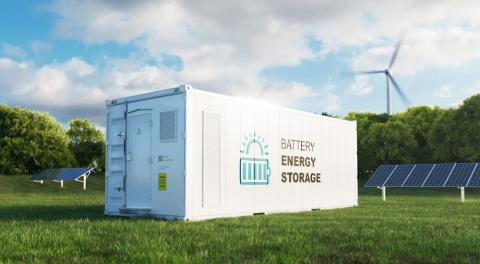What’s Driving the Renewables Revolution: No Fuel Costs
iRenewable energy is sometimes the subject of emotional debate — and the target of both fierce oppositional diatribes and quiet campaigns to craft regulations that discourage it. Common rants against renewables include warnings of unreliability and intermittency, harangues against grid “free-loaders” who put solar panels on their houses and the purported aesthetic horrors of wind farms (I kind of like how they look).
But money talks, and a gigantic investment opportunity is emerging around the trend toward decarbonizing the energy economy. It’s an opportunity that holds so much budding appeal that I’ll make this prediction: once investors and policy makers fully comprehend just how much money can be made by transitioning the economy away from fossil fuels, there will be no stopping that train.
The main engine driving the rise of renewables? No fuel costs.
Renewables make far more investment sense today than traditional sources of energy in at least four ways:
An energy sector that has no fuel costs avoids the ups and downs of volatile commodity markets, which gives that sector valuable price stability.
Renewables mean less financial exposure to politically uncertain regions and less involvement with politically unsavory regimes.
Renewables mean significant additional available capital—capital that would otherwise be spent on fuel and that would literally go up in smoke.
Renewables embody advances in technology, and technology always gets cheaper as it reaches scale.
These four forces add up ultimately to lower energy costs, giving rise to a virtuous cycle of falling prices and greater demand. As renewable energy gets cheaper, consumers and businesses push for more of it. Profits increase because demand skyrockets. Manufacturers pass on energy-cost savings to consumers, employment rises as the renewables industry grows, and investment returns increase—often at exponential rates—because of the fast growth and perceived potential.
It’s already happening, and acknowledgement and support for the trend is appearing even in places one might not expect. The National Bank of Abu Dhabi issued a report this spring in which it concluded that “fossil fuels can no longer compete with solar technologies on price” and that said solar PV project prices in Dubai were attracting capital and setting “a new global benchmark” that was competitive with $10-per-barrel oil and $5/MMBtu natural gas. Prices for U.S. oil and natural gas this week were about $55 a barrel and $2.67/MMBtu, respectively (MMBtu is a measure used to put a price on the heat value of various energy sources; lower MMBtu sources are more economical).
What’s occurred in Dubai has done so without government subsidies. Investors of course don’t put money into renewables out of the goodness of their hearts. They expect a reasonable return, and their projections tell them they will get it.
There’s also the renewable employment story. Solar job growth has increased to more than double the job creation in oil and gas since 2012, in spite of the shale revolution and before recent huge layoffs in the fossil-fuel sector. Continental Resources estimates that more than 100,000 oil-and-gas jobs have been lost globally as oil prices have dropped recently. And researchers at Duke University just came out with a report in the journal Energy Policy that counts more than 79,000 “direct and spinoff jobs” created from wind and solar electricity generation from 2008 through 2012. The coal industry, by comparison, shed 49,530 coal jobs over the same period of time, and the industry continues to struggle. Renewables, according to the Duke study and to other research, will continue to create more jobs.
To be sure, renewable energy requires upfront costs, but shelling out for those startup costs is a no-brainer. The International Energy Agency last year estimated that it would cost approximately $50 trillion to decarbonize the global economy by 2050. The agency also estimated that such an investment would amount to $117 trillion in fuel-cost savings.
Imagine the potential impact of those trillions in new, diversified investment across the global economy. A wave of that scale would bring greater energy security, would drive vast economic growth, and would mean prosperity for more people.
Is there really anything to argue about?
Deb Lawrence is an IEEFA consultant and founder of Energy Policy Forum.














